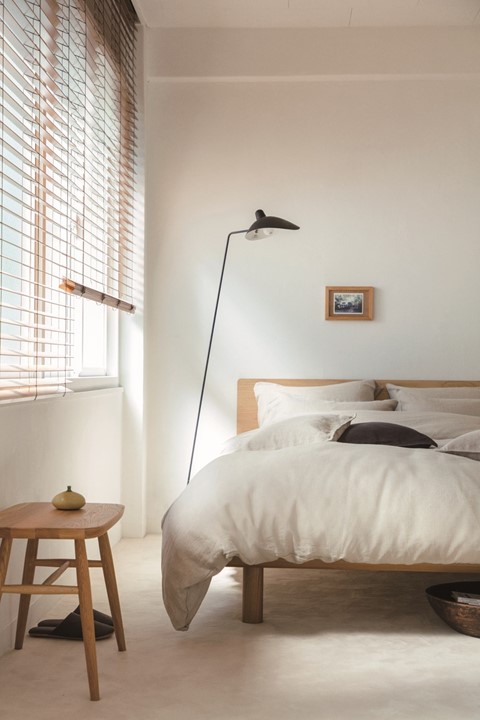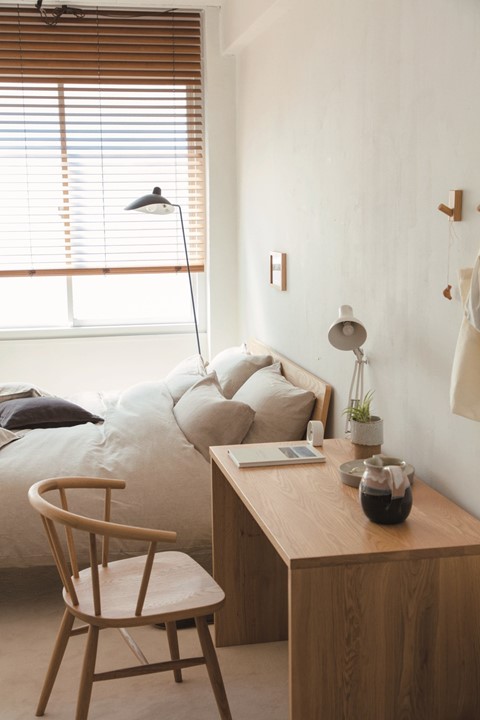Five tips for applying Muji’s design principles to your own home
In the West we may be becoming less religious, but we’re still just as spiritual. Many of us share an overwhelming need to find peace in this chaotic and often testing socio-economic climate – something that is demonstrated in the way we latch onto the promise of serenity from the likes of organisational guru Marie Kondo, and in our nostalgia for the utilitarian beauty of Modernist architecture, a movement which inherited much of its aesthetic and structure from Japan via architects like Junzo Sakakura and Kunio Maekawa, who worked closely with pivotal figures such as Le Corbusier. Ritualistic design and a focus on social functionality can be traced back to the traditional construction of Japanese homes, yet is now accepted by many as the peak of aspirational living. A recent trip to Tokyo allowed me to take a deeper dive into the appeal of Japanese spirituality and how it is being adopted by the West via interior design.
Speaking on the eighth floor of Muji’s towering headquarters in Tokyo, surrounded by some 3,000 books which originally belonged to the company’s founder Ikko Tanaka, general manager of household design Naoko Yano talks candidly about the way international markets perceive their ever-evolving, but still inherently Japanese, offering. “Many people see zen in Muji design and culture,” she explains, “But actually we’re not very conscious of it, it’s not really our message to deliver zen.” As becomes apparent throughout our conversation, it’s not that Japanese spirituality isn’t a defining factor in the brand’s principles, but that what is key to the development of Muji’s global presence are its tenets of simplicity, authenticity and an evergreen cultural awareness that is central to the Japanese way of life. Here, Yano offers some advice on transforming your home through these principles.
1. Minimise materials
“There are actually three principles that Muji always has,” states Yano. “The first one is selection of materials, the second one is streamlining the process and third is the presentation of the packaging. By doing this Muji presents very simplified design. We don’t emphasise that this is Japanese design, but by default this process is what Muji presents.”
Apply these principles when designing your own home by carefully selecting two to three primary materials that offer the aesthetic and practical features you need the most. This will streamline your scheme and create a cohesive, balanced environment.
2. Simplicity and subtlety are key
“What Muji often says, as a brand, is ‘Muji is enough’. What we are trying to pursue is being the background to everybody’s life. In order to do that we have to be able to blend in, in different types of aspects, and that’s why our simplicity has become so important.”
It can be tempting to go wild with statement items, but in order to really make them stand out you should prioritise just one per room, allowing the subtle background styling to emphasise its features.

3. Less is more
“What we think is important is that Muji items are easy to use for everyone. One of the keys to our design is the module, so that it comes in the same unit, also storage items is key to Muji and there’s a lot of design behind it so that everything fits each other. While some popular brands provide a wide variety of items, Muji presents something that is opposite – one thing is enough. If you have one item you can rearrange it, you can make the height taller, you can make it wider. Muji doesn’t actually provide varieties, but that’s what we present because that will be enough. That’s why Muji items fit very well as a background. What we are hoping to achieve is a confidence.”
Simply put, less is more. Variety may well be the spice of life, but when you intend to live with something every day, calmness and longevity is key. Choose modular items that work together seamlessly and you can use them over and over, wherever you might move.
4. Go local
“One of the reflections of this principle is Found Muji: not products made by Muji, but found by Muji. They are items made based on the local history, often born out of the local climate or environment, so they are completely different from those in Japan. They are tools that people use in their daily lives and Muji learns a lot from them. For example, in Paris and in London there are tools made not by famous designers, but by relatively anonymous designers and we learn a lot from them, so maybe that’s why Muji is growing in European markets. From your own country, the UK, there was the industrial revolution. Design was informed by industry and that was very minimal and very simplified and I respect that, and Muji respects that. It also applies to design from Germany and Switzerland, as well as Nordic countries, where I have lived.”
As the Japanese brand expands into more and more European markets, applying Japanese principles to regional design is both possible and essential. Wherever you find yourself setting up home, you can be sure that someone locally is designing furniture, textiles or art inspired by their surroundings. Seek them out and watch as your new home takes shape.
5. Adapt to your environment
“I lived in Sweden between 2002 and 2003. What I realised there was that they don’t have many natural resources and so they have to be creative in order to live a rich life. The winter is very long, so how you spend time indoors is very important to them.”
With these guidelines for living secured as central pillars of Muji’s growth, Yano explains that the companies must think about society and community as they continue to operate globally. “I think that, fundamentally, Muji’s product is what the founder left, which is not just the products, but a philosophy.” As consumerism continues to adapt to the wants and needs of the West, the rise of a spirituality so clearly tied to Japanese culture is seemingly only inevitable.
